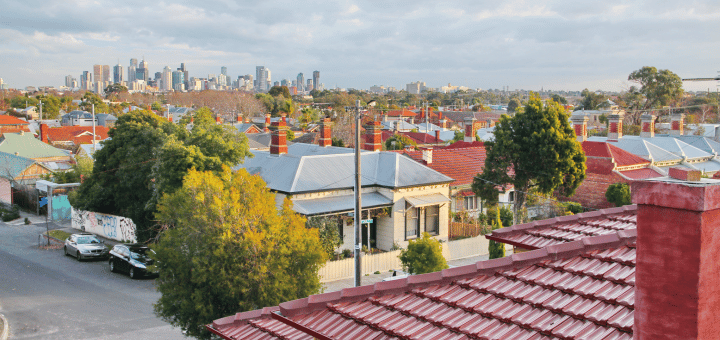At a time when more people are renting for longer, the rental market is facing a series of challenges. Rental affordability and availability is decreasing for those most in need, while the rental experience remains less than ideal. A summary of the housing whitepaper, Private Renting in Australia – A Broken System.
Last month, property settlement group PEXA and residential property business LongView published the second of three whitepapers on Australia’s housing crises. The first paper, focused on the long-term drivers of housing prices. The second focuses on Australia’s rental system, with the bold title of Private Renting in Australia – A Broken System. (Note that the focus is on private renters – focused on urban areas – not social housing.)
As we did with the first whitepaper, we’re summarising and sharing this work because housing is an issue close to our heart and core to our work with local governments across Australia. You can read the full whitepaper via the link at the bottom of this article.
More people are renting for longer
The 2021 Census showed 26% of Australia’s households (more than 2.9 million) to be renting privately. This proportion has grown from 4% since 2006, mirrored by a decrease in home ownership. The proportion of renters is increasing across all age groups, with the largest increases among low- and middle-income households.
Renting is often seen as stepping-stone towards becoming a homeowner, but that is no longer necessarily the default. 43% of renters have been renting for a decade or more – and rarely in the same property.
Rental affordability and availability is decreasing for the low-income households
Rental prices having been rising in Australia for decades. In capital cities, this has been generally in line with inflation. Growth in rental costs has been slightly outpaced by median incomes,
On the face of it, this seems like good news. However, rental costs growth has been significantly more than pensions and similar welfare benefits (excluding rent assistance), reflecting historic expectations that the majority of age pensioners will own their own home. And while growth of incomes has remained consistent across all income levels, the availability of affordable rentals has decreased significantly, adversely affecting low-income households who cannot afford to pay for rentals.
Vacancy rates are at generational lows, creating increased competition and lowering affordability. The paper cites a report that in Sydney 80% of renters pay more than the asking price. Rental selection is often based on who the landlord believes is most likely to pay rent on time and in full each month.
This impact on low-income households is compounded by the fact these households disproportionately rent – home ownership being unattainable – and pay a higher proportion of their income on rent.
Renters often face poor rental experiences
Australia is one of the hardest places in the developed world to be a renter.
Insecurity is one of the key challenges for renters. Up to 36.5% of private renters moved three or more times in last five years; for homeowners, this was 6.4% of owners. Most leases are terminated by renters rather than landlords, being a renter can create lingering insecurity, as renters may be compelled to move with limited notice. While more people are renting for longer, long-term leases are rare. Being forced to move impacts different households differently. For families with school-aged children, the disruption can be immense.
Adding to this insecurity is finding rentals. Timing a new lease can be tricky. Renters are limited in their choice of new accommodation by what’s available in a small window. Renters who can afford it may have to pay double rent to guarantee a new rental when their old lease comes up.
Securing a lease (in an appropriate home) presents its own difficulties. As noted previously, leases generally go to those most likely / able to pay. Discrimination in the rental market goes beyond income, and includes age, household type (eg having young children or being a single mum) or having a pet.
The quality of rental stock is another factor in the rental experience – often a negative one. For example, heating and cooling are significant factors in making a place liveable, and there is little incentive for owners to improve these. Rented homes are far less likely to have adequate heading and cooling, with lower-income households significantly more affected. Another related factor is that of maintenance. Maintenance issues can have a huge impact on a home’s liveability. Only 32% of private renters say they have no issues with their property, and 29% report facing delays when raising issues.
Things aren’t great for landlords, either
Since 1990, approximately 60% of all property investors would have profited more by investing in superannuation.
Property is generally seen as a secure investment and a good source of retirement income. Residential property is also one of the few types of assets that can be used both personally (to live in) and for investment purposes (to rent). Yet investing as a landlord as its own challenges.
- Individual property investment is much more involved and complex than many expect.
- Property is actually a highly variable form of investment, particularly when funded with a mortgage.
- The overall median post-tax return on is often less than other lower-effort investments, such as superannuation.
About half of all investment properties exit the rental market within five years. Landlords selling rental properties being the most common reason for landlord-initiated lease termination, meaning a poor experience for landlords feeds back into insecurity for renters.
The system is the problem
The relationship between landlords and renters is primarily driven by competing interests. Landlords want flexibility in how they utilise their property; renters want security. Landlords want to minimise maintenance costs; renters want well-maintained, liveable housing. The whitepaper suggests the tenant vs landlord a false (or at least intractable) battle that won’t be settled without systemic changes.
PEXA and LongView’s final housing whitepaper, focusing on solutions to the three housing crises (purchase affordability, rental affordability, rental experience) is flagged for publication in May.
Understand your local rental story
.id (informed decisions) helps councils understand the changing demand and affordability of rental properties in their local areas through our housing monitor (housing.id) tool. Learn more →
Use the link below to view the full whitepaper.











